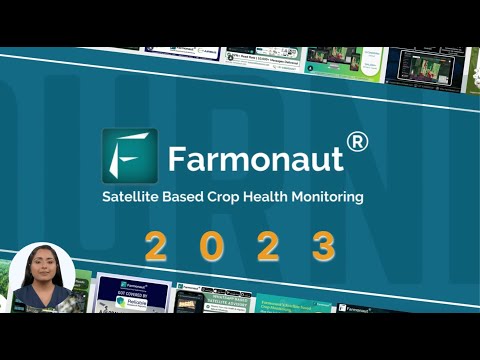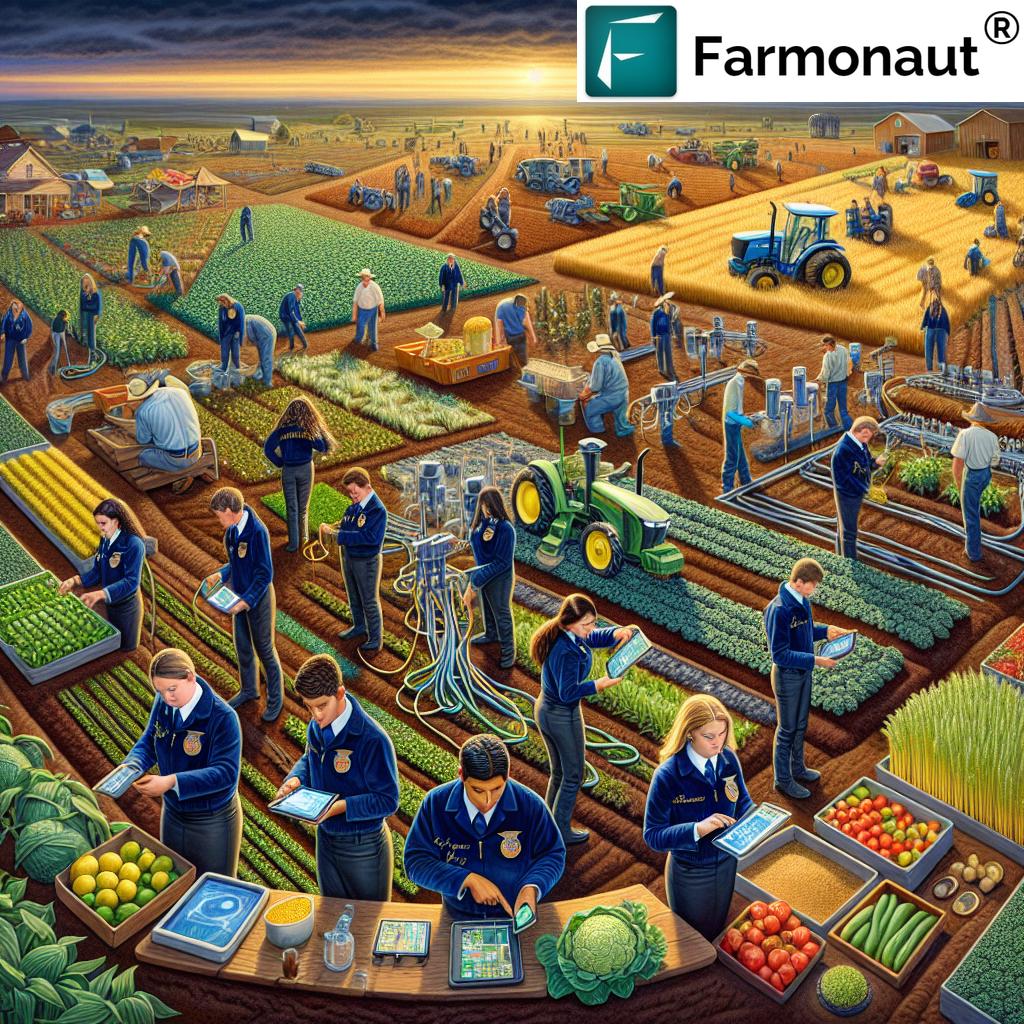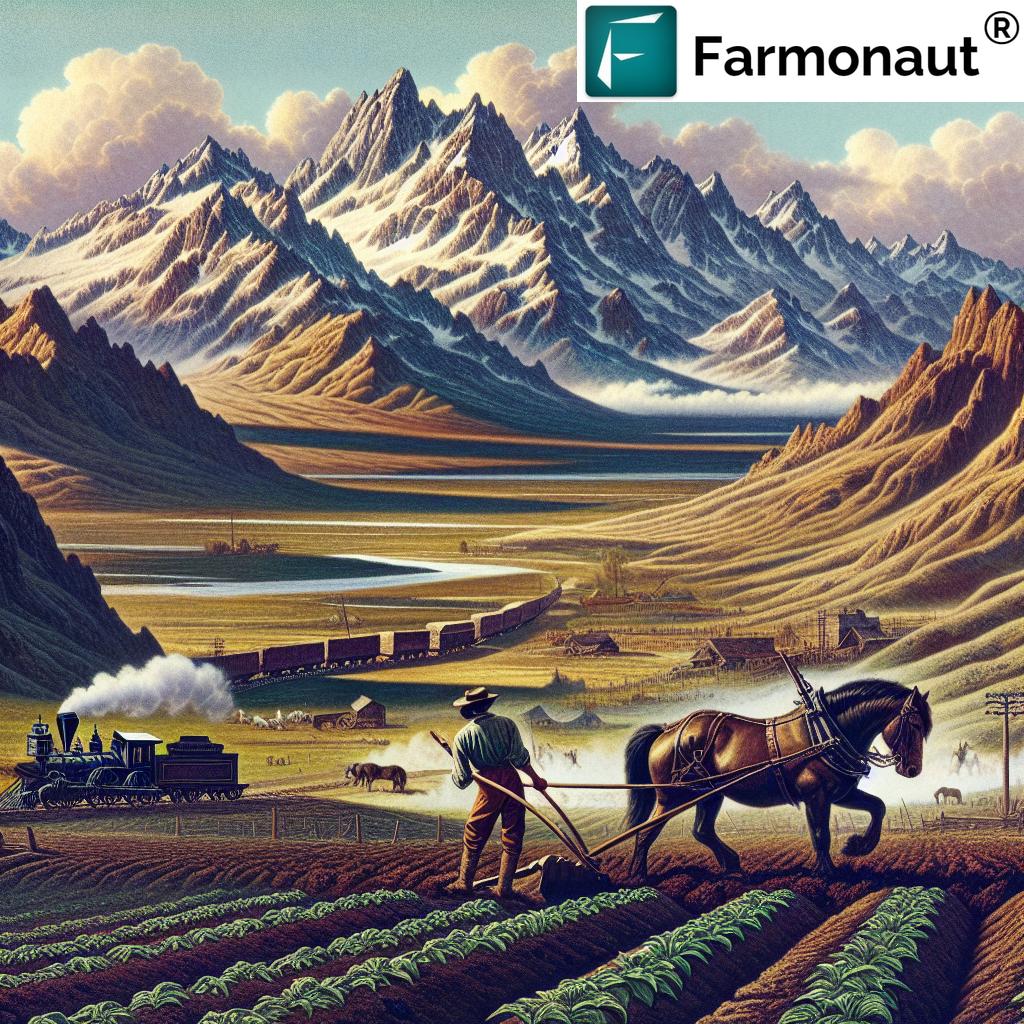Agricultural Trade Tensions: How Tariffs and Retaliation Impact US Farmers and Global Markets

“US agricultural exports account for over 20% of farm income, making trade policies crucial for rural economies.”
In the ever-evolving landscape of global agricultural trade, US farmers and producers find themselves at the center of a complex web of tariffs, negotiations, and market dynamics. As agricultural trade groups raise critical concerns about potential tariffs and their impact on farm exports and imports, we delve into the intricate world of international agricultural agreements and their far-reaching effects on rural communities and the ag economy.
The delicate balance between achieving fairer trade and protecting US agricultural interests in the global marketplace has never been more crucial. With major markets like Canada, Mexico, and China at stake, the agricultural sector is bracing for potential retaliatory measures while lobbying for tariff exemptions and emphasizing the importance of maintaining market access.
The Stakes: US Agricultural Exports and Global Markets
The United States has long been a powerhouse in agricultural exports, with sales topping $176 billion in 2024. While this figure represents a slight decline from the record high of $196 billion in 2022, it still underscores the critical role that international trade plays in supporting American farmers and ranchers.
Key markets such as Mexico, Canada, and China accounted for approximately $83 billion in agricultural sales combined. These figures highlight the immense importance of maintaining strong trade relationships with these nations and the potential vulnerability of the US agricultural sector to trade tensions and retaliatory measures.
The Tariff Dilemma: Protecting Domestic Interests vs. Global Competitiveness
As the Trump administration prepares to unveil more extensive tariff plans, agricultural groups find themselves walking a tightrope. On one hand, they support the president’s focus on achieving fairer trade for United States producers, workers, and industry. On the other, they express deep concern about the potential for trade retaliation and its impact on the agricultural sector.
The proposed global tariff of 20% on all imports has sent shockwaves through the agricultural community. While designed to protect domestic industries, such measures could trigger a cascade of retaliatory actions from trading partners, potentially devastating US farm exports.
Lobbying for Exemptions and Fair Treatment
In response to these concerns, agricultural groups have been actively lobbying for tariff exemptions on imports. This strategy aims to mitigate the potential negative impacts on the sector while still supporting the broader goals of fair trade and domestic security.
A recent example of successful lobbying was the exemption granted for potash imports from Canada. This move highlights the administration’s willingness to consider the unique needs of the agricultural sector in its trade policies. However, it also underscores the ongoing challenge of balancing protectionist measures with the realities of global agricultural trade.
The Threat of Retaliation: A Double-Edged Sword
Perhaps the most significant concern for US farmers and ranchers is the specter of retaliatory measures from key trading partners. Countries like Canada and China have already implemented some retaliatory actions in response to US tariffs, and the fear is that these measures could escalate, targeting US agricultural exports specifically.
“Retaliatory tariffs on US agricultural products have affected over $30 billion worth of exports since 2018.”
The potential for retaliation puts American farmers and ranchers, growers, associated businesses, and rural communities on the front lines of trade disputes. This vulnerability is particularly acute given that more than 20% of US farm income is based on agricultural exports, with some commodities relying even more heavily on international markets.
Navigating the Complexities of Global Agricultural Trade Policies
As we navigate these turbulent waters, it’s crucial to understand the intricate web of global agricultural trade policies and their impact on farmers and markets worldwide. Tools like carbon footprinting are becoming increasingly important in this landscape, helping agribusinesses monitor and reduce their environmental impact while meeting evolving international standards.
Similarly, innovations in product traceability are revolutionizing supply chain transparency, a critical factor in maintaining trust and compliance in international trade. These technologies not only help farmers and producers meet stringent global standards but also provide valuable data for negotiating fair trade practices.

The Call for Negotiations and Trade Agreements
In light of these challenges, agricultural groups are calling for a shift in focus from tariffs to negotiations and trade agreements. This approach aims to maintain existing markets while expanding opportunities for US agricultural products globally.
- Support for reviewing the United States-Mexico-Canada Agreement (USMCA) in 2026
- Advocacy for trade talks with the United Kingdom, India, and other potential markets
- Emphasis on eliminating and reducing foreign tariff and non-tariff trade barriers
By pursuing these strategies, the agricultural sector hopes to gain new export market opportunities, leading to a stronger and wealthier America. This approach aligns with the broader goal of expanding market access for US agricultural products while avoiding punitive tariffs that could trigger retaliation.
The Role of Technology in Navigating Trade Challenges
As the agricultural sector grapples with these trade tensions, technology is playing an increasingly crucial role in helping farmers and producers navigate the complexities of global markets. Platforms like Farmonaut are at the forefront of this technological revolution, offering innovative solutions that can help mitigate some of the challenges posed by trade disputes.
Farmonaut’s satellite-based farm management solutions provide valuable tools for optimizing crop yields and resource management. By leveraging advanced technologies such as AI-driven advisory systems and blockchain-based traceability, farmers can improve their competitiveness in global markets, even in the face of trade barriers.
For instance, the crop loan and insurance verification services offered by Farmonaut can help farmers secure crucial financing, enabling them to weather the uncertainties of international trade disputes. Additionally, the platform’s fleet management tools can help agribusinesses optimize their logistics, potentially offsetting some of the increased costs associated with tariffs and trade restrictions.
Quantifying the Impact: A Look at the Numbers
To better understand the potential impact of agricultural tariffs on US exports, let’s examine a detailed breakdown of key products and markets:
| Agricultural Product | Top Export Destinations | Current Export Value (USD) | Potential Tariff Rate (%) | Estimated Export Value Loss (USD) |
|---|---|---|---|---|
| Soybeans | China, Mexico, Japan | $25 billion | 25% | $6.25 billion |
| Corn | Mexico, Japan, South Korea | $15 billion | 20% | $3 billion |
| Wheat | Mexico, Japan, Philippines | $7 billion | 15% | $1.05 billion |
| Beef | Japan, South Korea, Canada | $8 billion | 30% | $2.4 billion |
| Pork | Mexico, Japan, China | $6 billion | 20% | $1.2 billion |
This table illustrates the potential financial impact of trade tensions on major US agricultural exports. The estimated export value losses underscore the significant stakes involved in ongoing trade negotiations and the importance of maintaining open markets for US farmers and producers.
Strategies for Farmers and Producers in Uncertain Times
In the face of these trade challenges, US farmers and producers must adopt proactive strategies to protect their interests and maintain their competitiveness in global markets. Here are some key approaches:
- Diversification of export markets to reduce dependency on any single country
- Investment in technology and precision agriculture to improve efficiency and reduce costs
- Exploration of value-added products to increase profit margins and market differentiation
- Participation in industry groups and lobbying efforts to influence trade policies
- Utilization of risk management tools, including crop insurance and futures contracts
By implementing these strategies, farmers can better position themselves to weather the uncertainties of international trade disputes and maintain their vital role in the global agricultural marketplace.
The Role of Technology in Adapting to Trade Challenges
As trade tensions continue to impact the agricultural sector, technology is emerging as a crucial tool for farmers and producers to adapt and thrive. Platforms like Farmonaut offer innovative solutions that can help mitigate some of the challenges posed by trade disputes and changing market conditions.
Farmonaut’s large-scale farm management tools, for instance, can help agribusinesses optimize their operations, potentially offsetting some of the increased costs associated with tariffs and trade restrictions. By leveraging satellite imagery and AI-driven insights, farmers can make more informed decisions about crop management, resource allocation, and market timing.
Moreover, the platform’s crop plantation and forest advisory services can provide valuable guidance on adapting to changing market conditions, helping farmers pivot to more profitable crops or production methods in response to trade-related challenges.
The Global Perspective: Implications for International Agricultural Markets
While much of our discussion has focused on the impact of trade tensions on US farmers and producers, it’s crucial to consider the broader implications for global agricultural markets. The ripple effects of these disputes extend far beyond American borders, influencing food security, economic stability, and rural development worldwide.
For developing nations that rely heavily on agricultural exports, the shifting landscape of global trade can have profound consequences. Changes in US trade policies and potential retaliatory measures from other major agricultural producers can lead to market disruptions, price volatility, and economic uncertainty for farmers and rural communities around the world.
Furthermore, these trade tensions have the potential to reshape global supply chains, altering long-established patterns of agricultural production and distribution. This could lead to both challenges and opportunities for farmers and agribusinesses across different regions, as they adapt to new market realities and seek out alternative trade partnerships.
The Path Forward: Balancing Fair Trade and Agricultural Interests
As we navigate the complex landscape of agricultural trade tensions, it’s clear that finding a balance between fair trade practices and protecting the interests of US farmers and producers is crucial. This delicate equilibrium requires a multifaceted approach that combines diplomatic negotiations, technological innovation, and adaptive strategies at both the policy and farm levels.
Key considerations for the path forward include:
- Continued engagement in bilateral and multilateral trade negotiations to secure favorable terms for US agricultural exports
- Investment in research and development to enhance the competitiveness of US agricultural products in global markets
- Support for farmers and rural communities in adapting to changing trade dynamics through education, financial assistance, and technology adoption
- Exploration of new market opportunities and diversification strategies to reduce vulnerability to trade disputes with individual countries
- Collaboration between government agencies, industry groups, and technology providers to develop comprehensive solutions to trade-related challenges
By pursuing these strategies, the US agricultural sector can work towards maintaining its strong position in global markets while navigating the complexities of international trade relations.
Conclusion: Adapting to a Changing Agricultural Trade Landscape
As we’ve explored throughout this discussion, the impact of trade tensions and tariffs on US farmers and global agricultural markets is both significant and multifaceted. The challenges posed by these dynamics require innovative solutions, adaptive strategies, and a commitment to fair and open trade practices.
While the path forward may be uncertain, the resilience and innovation of the agricultural sector provide reasons for optimism. By leveraging technology, engaging in strategic negotiations, and adapting to changing market conditions, US farmers and producers can continue to play a vital role in feeding the world and driving economic growth in rural communities.
As we move forward, it’s crucial for all stakeholders – from policymakers to farmers, from industry groups to technology providers – to work together in navigating these complex trade issues. By doing so, we can strive to create a more stable, equitable, and prosperous future for agriculture in the United States and around the world.
FAQ Section
- How do agricultural tariffs impact US farmers?
Agricultural tariffs can reduce the competitiveness of US farm products in international markets, potentially leading to decreased exports and lower farm incomes. - What are some key markets for US agricultural exports?
Major markets include China, Mexico, Canada, Japan, and South Korea. - How can farmers mitigate the risks associated with trade tensions?
Strategies include diversifying export markets, investing in technology, exploring value-added products, and utilizing risk management tools. - What role does technology play in addressing trade-related challenges?
Technology can help farmers optimize operations, improve efficiency, and adapt to changing market conditions through tools like precision agriculture and data-driven insights. - How do trade tensions affect global food security?
Trade tensions can lead to market disruptions and price volatility, potentially impacting food availability and affordability in various regions.
Earn With Farmonaut: Affiliate Program
Earn 20% recurring commission with Farmonaut’s affiliate program by sharing your promo code and helping farmers save 10%. Onboard 10 Elite farmers monthly to earn a minimum of $148,000 annually—start now and grow your income!
Ready to explore Farmonaut’s innovative agricultural solutions?
For developers interested in integrating Farmonaut’s powerful agricultural data into their own applications, check out our API and API Developer Docs.





















